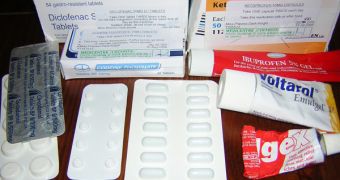Researchers at the Mayo Clinic revealed that children with epilepsy, who suffered from seizures, but are now free of them, due to the influence of drugs, can stop using the drugs altogether. The risk of these children developing intractable epilepsy was found to be minimal, so the find was presented on Sunday at the American Epilepsy Society's annual meeting, which took place in Seattle.
"It is often recommended that children with epilepsy who become seizure-free on anti-seizure medications be withdrawn from the drugs to avoid side effects of long-term use. Those potential side effects include cognitive slowing, incoordination, weight change, behavioral decline, and liver damage. However, few previous studies had examined the risk of intractable epilepsy following withdrawal of anti-seizure medication, and the reported risks varied widely," argues Mayo Clinic pediatric neurologist Katherine Nickels, MD, who is also an author of the new study.
"The risk of children developing intractable epilepsy after withdrawal of anti-seizure medication was only 5 percent, which is similar to the risk of intractable epilepsy at the time of initial diagnosis of epilepsy in children," the researcher adds.
To test their hypothesis, the research team followed the cases of some 241 patients, aged 0 to 16 between 1990 and 2000. Tests revealed that 56 kids (37 percent) were cured via anti-seizure drugs, and taken off them, so as to prevent side-effects. Only 5 percent of them developed intractable epilepsy over the next year or so, while the others were either placed back on the drugs or taken off completely.
Epilepsy is a fairly common neurological disorder, whose main features are reoccurring, incontrollable seizures, during which the patient loses consciousness and brain activity becomes erratic, abnormal, or excessive. An estimated 50 million worldwide suffer from this condition, which can now only be tamed through medicine, but not entirely cured, despite the best international efforts.

 14 DAY TRIAL //
14 DAY TRIAL //